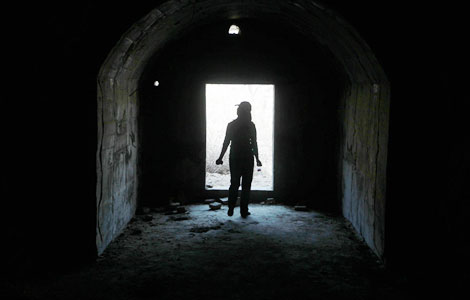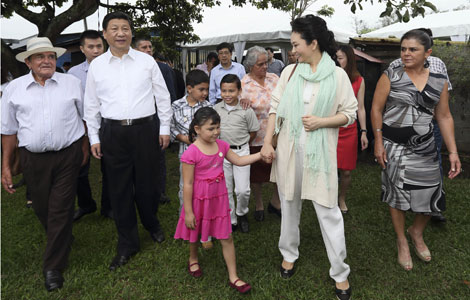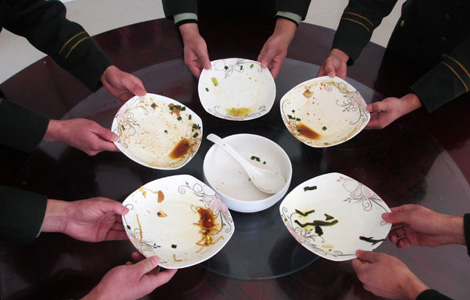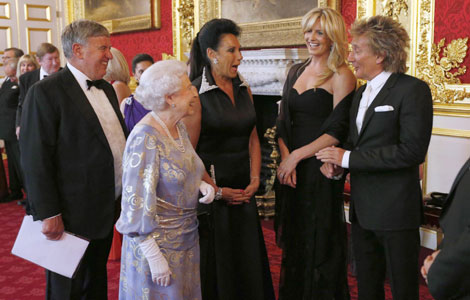No first use of nuclear weapons
Updated: 2013-04-25 08:13
By Yao Yunzhu (China Daily)
|
||||||||
China has not changed the policy it has persistently upheld for half a century and other countries should also commit to it
On April 16 the Information Office of the State Council of the People's Republic of China released its latest defense white paper. As usual, this document attracted immediate media attention and triggered wide-ranging discussions about the intentions and capabilities of China's armed forces. One speculation has been that China might have changed or be considering changes to its long-held nuclear weapons policy of no first use, because for the first time the white paper has failed to reiterate China's pledge not to use nuclear weapons first.
However, a careful reading of this year's white paper and a study of all such papers since 1998 easily explains the conspicuous absence of this key phrase, which is usually repeated in Chinese official documents on defense and nuclear policy.
First, unlike previous white papers, which have been about China's national defense, the latest edition was on the diversified employment of China's armed forces. It has changed from a comprehensive elaboration of China's national defense to a more focused discussion on a specific aspect.
Major General Chen Zhou, a senior researcher and a key author of the white paper, explained in an interview that this is the first white paper that adopted a thematic approach so that the subject could be dealt with more thoroughly. Compared with previous editions, this year's white paper has no section on national defense policy, which is the section that usually contains the commitment to no first use of nuclear weapons
Second, in the section on The Building and Development of China's Armed Forces, the force structure, missions and roles of the People's Liberation Army Second Artillery Force are specified, stating that its nuclear component is "responsible for deterring other countries from using nuclear weapons against China, and carrying out nuclear counterattacks". This conforms with China's policy of no first use.
The section on Defending National Sovereignty, Security and Territorial Integrity provides information on the preparedness of the Second Artillery Force, which keeps an appropriate level of readiness in peacetime and has formed a complete system for combat readiness to ensure rapid and effective responses to threats and emergencies. The alert posture of the Second Artillery Force is also in compliance with China's nuclear weapons policy of no first use.
In addition, former president Hu Jintao reaffirmed the policy of no first use at the nuclear security summit in Seoul in March last year. It has been reiterated in all necessary policy documents and official statements since. There is no sign that China has changed or is going to change a policy it has wisely adopted and persistently upheld for half a century.
However, speculation about a possible change to the policy of no first use has not emerged without reason. Calls for a change to the policy pledge are repeatedly heard in the Chinese media, including social media such as micro blogs, these stem from two basic understandings:
First, in the likelihood of confrontation, the ballistic missile defense systems that the United States and its allies have deployed, or are planning to deploy, would be capable of intercepting retaliatory Chinese nuclear weapons launched after it has already been attacked, thus potentially negating the effectiveness of China's nuclear arsenal as a deterrent.
Second, the US is developing its conventional strategic strike capabilities. Once deployed, they could have the capability to strike China's nuclear arsenal in the case of conflict and make redundant China's policy of no first use.
So far, no nuclear states have made it official policy to strike with strategic conventional capabilities against the nuclear weapons of another state, although such capabilities are being developed for the declared purpose of neutralizing the capabilities of nuclear proliferators. So the Cold War position of only using nuclear weapons against nuclear weapons still seems valid.
However, the 2013 National Defense Authorization Act, which was signed into law by US President Barack Obama on Jan 2, requests a report from the Commander of US Strategic Command by Aug 15 on alleged Chinese underground tunnel networks and to review the US capability to neutralize such networks with "conventional and nuclear forces". It seems to imply that a conventional strike against Chinese nuclear weapon systems is an option.
For nearly half a century, China's pledge of no first use has served as the cornerstone of its policy on nuclear weapons. China and the rest of the world should uphold the policy of no first use, rather than discredit such a commitment.
A constructive approach would be to ensure the policy through nuclear policy dialogues, establishing a multilateral agreement on no first use among all the nuclear weapon states, and to consider limiting or even prohibiting the use of nuclear weapons in a legally binding international agreement.
The author is director of the China-America Defense Relations at the Academy of Military Science. www.chinausfocus.com
Related readings:
White paper outlines air defense
China issues white paper on national defense
Most Viewed
Editor's Picks

|

|

|

|

|

|
Today's Top News
Relationship 'relaunched'
Good start expected for summit
Xi, Mexican president discuss bilateral co-op
Cooperation to drive mutual growth
Chinese president arrives in Mexico for state visit
China is victim of hacking attacks
US to be largest trade partner
China joins fight against hacking
US Weekly

|

|
















